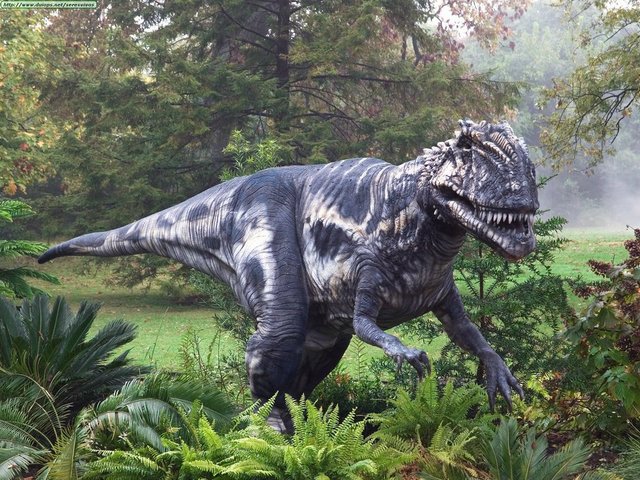Post by dinosauria101 on Jul 1, 2019 16:43:03 GMT 5
Bistahieversor sealeyi
Bistahieversor (meaning "Bistahi destroyer") is a genus of tyrannosauroid dinosaur. Bistahieversor existed around 75 million years ago during the Late Cretaceous. The name Bistahieversor comes from the Navajo Bistahí, or "place of the adobe formations" in reference to the Bisti/De-Na-Zin Wilderness where it was found, and eversor, meaning "destroyer." Material from both adolescent and adult individuals has been found in the Kirtland Formation of New Mexico, United States. Adult Bistahieversor are estimated to have been around 9 metres (30 ft) long, weighing at least a ton. The snout is deep, indicating that the feature is not unique to more derived tyrannosaurs such as Tyrannosaurus. Geographical barriers such as the newly forming Rocky Mountains may have isolated the more southerly Bistahieversor from more derived northern tyrannosaurs.

Megalosaurus bucklandii
Megalosaurus (meaning "Great Lizard", from Greek, μεγαλο-/megalo- meaning 'big', 'tall' or 'great' and σαυρος/sauros meaning 'lizard') is a genus of large meat-eating theropod dinosaurs of the Middle Jurassic period (Bathonian stage, 166 million years ago) of Europe (Southern England, France, Portugal). It is significant as the first genus of dinosaur (outside of birds) to be described and named. n many ways, Megalosaurus was your garden-variety theropod dinosaur, indistinguishable from a host of other big-headed, large-toothed carnivores of the late Jurassic period. What really sets this predator apart is the fact that it was the first dinosaur ever to be discovered and named: a fossilized femur of Megalosaurus was dug up in England in 1676, but it wasn't until 150 years later--after further discoveries--that it was given its name, Greek for "great lizard," by the early paleontologist William Buckland. Size about 30 feet long with weight estimates varying from 700 kg (1,500 lbs) to 1,100 kg (2,400 lbs).

Credit to Wikipedia
Bistahieversor (meaning "Bistahi destroyer") is a genus of tyrannosauroid dinosaur. Bistahieversor existed around 75 million years ago during the Late Cretaceous. The name Bistahieversor comes from the Navajo Bistahí, or "place of the adobe formations" in reference to the Bisti/De-Na-Zin Wilderness where it was found, and eversor, meaning "destroyer." Material from both adolescent and adult individuals has been found in the Kirtland Formation of New Mexico, United States. Adult Bistahieversor are estimated to have been around 9 metres (30 ft) long, weighing at least a ton. The snout is deep, indicating that the feature is not unique to more derived tyrannosaurs such as Tyrannosaurus. Geographical barriers such as the newly forming Rocky Mountains may have isolated the more southerly Bistahieversor from more derived northern tyrannosaurs.

Megalosaurus bucklandii
Megalosaurus (meaning "Great Lizard", from Greek, μεγαλο-/megalo- meaning 'big', 'tall' or 'great' and σαυρος/sauros meaning 'lizard') is a genus of large meat-eating theropod dinosaurs of the Middle Jurassic period (Bathonian stage, 166 million years ago) of Europe (Southern England, France, Portugal). It is significant as the first genus of dinosaur (outside of birds) to be described and named. n many ways, Megalosaurus was your garden-variety theropod dinosaur, indistinguishable from a host of other big-headed, large-toothed carnivores of the late Jurassic period. What really sets this predator apart is the fact that it was the first dinosaur ever to be discovered and named: a fossilized femur of Megalosaurus was dug up in England in 1676, but it wasn't until 150 years later--after further discoveries--that it was given its name, Greek for "great lizard," by the early paleontologist William Buckland. Size about 30 feet long with weight estimates varying from 700 kg (1,500 lbs) to 1,100 kg (2,400 lbs).

Credit to Wikipedia



